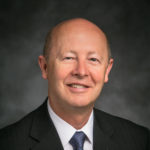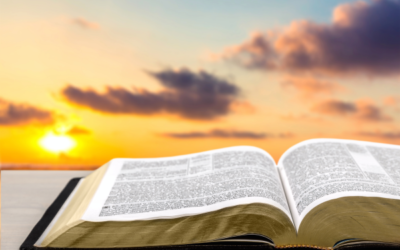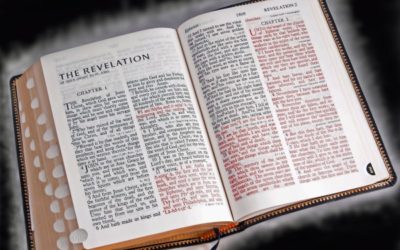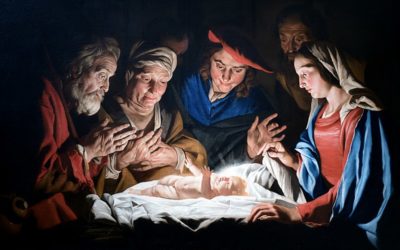In John 3:5, Jesus instructed Nicodemus, “Except a man be born of water and of the Spirit, he cannot enter into the kingdom of God.” Christians of Joseph Smith’s day generally interpreted this to mean that unless people received baptism in this life, they could never go to heaven. (For more on the Christian history of this doctrine, click here.)
This doctrine bothered Joseph for multiple reasons, not the least of which was that his beloved elder brother Alvin died without being baptized and that Joseph and Emma lost children of their own who had not received the ordinance. (For more about this, see the article “Latter-day Saint Doctrine of Baptism for the Dead.”)
Sections 137 and 138 of the Doctrine and Covenants both deal with work for the dead. They were accepted as part of the Latter-day Saint standard works in April 1976 and added initially to the Pearl of Great Price. After the works were accepted, the Church created printed inserts of these revelations for Church members to set into their scriptures. In 1979, Church leaders decided to move the two visions to the Doctrine and Covenants as part of their work on the new edition that was printed in 1981.
Doctrine and Covenants 137
Doctrine and Covenants 137 is a record from Joseph Smith’s journal of a vision he experienced on January 21, 1836, in the Kirtland Temple before its dedication. For more on the history of this section, click here. For the original text in Joseph’s journal, click here. For a photo of the room where this vision was received in the temple, click here.
Doctrinally, this section is very important because it builds on section 76 of the Doctrine and Covenants and lays the foundation for later revelations received in Nauvoo about baptism and other work for the dead.
In the Kirtland Temple vision, Joseph saw the celestial kingdom, “whether in the body or out I cannot tell,” he said (verse 1). In so saying, he echoed Paul the apostle in the New Testament, who said he “knew a man in Christ” who was “caught up to the third heaven, . . . whether in the body, or out of the body, I cannot tell” (2 Corinthians 12:2‒3).
Joseph described the celestial kingdom and people he saw there, including his parents (who were still alive at the time of the vision) and his brother Alvin (verses 2‒5).
In other words, he was seeing a vision of the future after Alvin was baptized for the dead in Nauvoo and received the other ordinances necessary for eternal life. But because Joseph had not yet received the revelations and keys necessary for these ordinances, he “marveled how it was that he [Alvin] had obtained an inheritance in that kingdom, seeing that he had departed this life before the Lord had set his hand to gather Israel the second time, and had not been baptized for the remission of sins” (verse 6).
When Joseph wondered this, “the voice of the Lord unto me, saying: All who have died without a knowledge of this gospel, who would have received it if they had been permitted to tarry, shall be heirs of the celestial kingdom of God; also all that shall die henceforth without a knowledge of it, who would have received it with all their hearts, shall be heirs of that kingdom; for I, the Lord, will judge all men according to their works, according to the desire of their hearts” (verses 7‒9).
That gave Joseph hope for his brother. But what of the children he and Emma lost? In the vision, Joseph “also beheld that all children who die before they arrive at the years of accountability are saved in the celestial kingdom of heaven” (verse 10).
Doctrine and Covenants 138
Joseph Smith’s nephew and later successor as Church President, Joseph F. Smith, also received an important vision on work for the dead. Like his uncle, Joseph F. had much experience with losing relatives to early death. He lost his uncle Joseph and his father Hyrum at Carthage Jail on June 27, 1844. He also lost thirteen children, something that proved agonizing to him over the years.
Losing small, innocent children caused him severe heartache, as did the loss of his forty-five-year-old son Hyrum Mack Smith earlier in 1918, the year Joseph F. experienced the vision that is now section 138. (For more on all this, click here.)
Hyrum Mack’s death struck Joseph F. hard because he was an apostle son, someone who might someday become President of the Church himself. Hyrum Mack lived an admirable life and brought great comfort to his father. His death was a difficult blow. (For more on this, click here.)
For documents dealing with the history of this section, click here.
Section 138 builds on prior revelations regarding work for the dead. The vision came to Joseph F. much as visions came to Nephi and other prophets. In 1 Nephi 11:1, Nephi explained that “after I had desired to know the things that my father had seen, and believing that the Lord was able to make them known unto me, as I sat pondering in mine heart I was caught away in the Spirit of the Lord,” receiving the great vision recorded in the Book of Mormon.
Similarly, in section 138, Joseph F. Smith “sat in my room pondering over the scriptures” (verses 1, 5‒10, 28) “and reflecting upon the great atoning sacrifice that was made by the Son of God” (verses 2‒4).
President Smith recounted, “As I pondered over these things which are written, the eyes of my understanding were opened, and the Spirit of the Lord rested upon me, and I saw the hosts of the dead, both small and great” (verse 11).
He then saw in vision Christ entering the spirit world, teaching His gospel to the righteous, and organizing them to teach the wicked in spirit prison (verses 11‒31). Those messengers then carried “the message of redemption” to the wicked (verses 31‒37).
In the vision, President Smith saw many of the prophets of old, as well as righteous women, “our glorious Mother Eve, with many of her faithful daughters who had lived through the ages and worshiped the true and living God” (verses 38‒49, 53).
“The dead,” President Smith saw, “had looked upon the long absence of their spirits from their bodies as a bondage. These the Lord taught, and gave them power to come forth, after his resurrection from the dead, to enter into his Father’s kingdom, there to be crowned with immortality and eternal life, and continue thenceforth their labor as had been promised by the Lord, and be partakers of all blessings which were held in reserve for them that love him.” (Verses 50‒52.)
This work of redeeming the dead continued to the last dispensation, with the righteous dead continuing to teach the wicked in the spirit world and the ordinance work being done for them in temples of the Lord (verses 53‒58).
President Smith makes clear that repentance is possible in the next life. “The dead who repent will be redeemed,” he explained, “through obedience to the ordinances of the house of God, And after they have paid the penalty of their transgressions, and are washed clean, shall receive a reward according to their works, for they are heirs of salvation.” (Verses 58‒59.)
“Thus,” he testified, “was the vision of the redemption of the dead revealed to me, and I bear record, and I know that this record is true, through the blessing of our Lord and Savior, Jesus Christ, even so. Amen.” (Verse 60.)
Credit for the image at top of the page: Photograph of President Joseph F. Smith, from the portrait of the First Presidency, 1905, public domain, copied from https://en.wikipedia.org/wiki/Joseph_F._Smith#/media/File:JFS_First_Presidency_1905_large.jpg.



